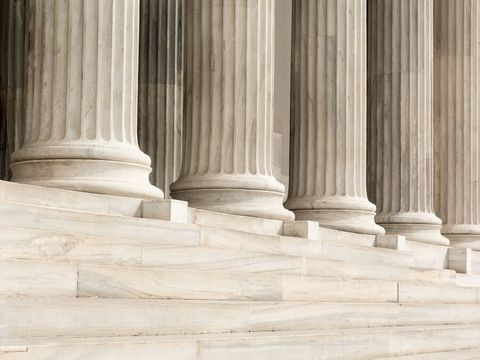Who Says There’s No Free Parking in New York?
Client Alert | 3 min read | 12.12.18
On December 7, 2018, Governor Cuomo signed into law, effective January 1, 2018, an amendment to New York Tax Law that negated, for New York State tax purposes, the effect of a 2017 change to the Internal Revenue Code relating to unrelated business income tax (UBIT) that disadvantaged many 501(c)(3) organizations. As part of the federal legislation commonly known as the Tax Cuts and Jobs Act of 2017 (TCJA), certain expenditures related to transportation benefits for employees, including transit and parking, were made nondeductible for federal income tax purposes. Most notably, certain kinds of free parking for employees were made nondeductible. Because section 501(c)(3) organizations do not ordinarily pay income tax, in order to apply the tax cost consistently to tax-exempt organizations as well as taxable businesses, the TCJA made these amounts subject to the UBIT for tax-exempts. See Internal Revenue Code section 512(a)(7). This change in the law came as a surprise to the nonprofit community, which has been advocating repeal of this tax increase. Section 501(c)(3) organizations objected both to the tax cost of this change to the law as well as the complexity of computing these amounts and complying with the new law. From the point of view of the nonprofit sector, this expansion of UBIT has diverted funding and put nonprofits at risk.
On December 7, 2018, the Internal Revenue Service published Notice 2018-99, which provided some long-anticipated guidance on how to calculate the nondeductible transportation benefits, including free parking. The initial reviews have been that the Notice is helpful on some fronts. However, the general principle that the federal version of UBIT applies to some kinds of free parking that tax-exempt organizations provide to their employees remains the law. In other words, the federal UBIT law remains in place and the fact based calculations in the interim guidance are quite complex.
Subsequently, on December 10, 2018, the House proposed an amendment to the Senate amendment of H.R. 88 that would repeal Section 512(a)(7) of the Internal Revenue Code retroactive to the date of enactment. However, in order to become law, the bill must be approved by the House and Senate and signed by the President.
New York State has its own version of UBIT. New York taxes unrelated business income at a 9 percent rate. Because New York Tax Law generally incorporates federal income tax provisions, if the New York legislature had taken no action, the transportation benefits made nondeductible by the TCJA would have been subject to a 9 percent tax (resulting in a total tax of 30 percent taking into account the 21 percent federal UBIT rate). The New York legislature, however, chose to override the TCJA so that the New York version of UBIT does not apply to these disallowed transportation benefits.
Still, all tax-exempt organizations that provide disallowed transportation benefits should review the Notice to determine what the 2017 Federal tax increase means for the 2018 tax year and what actions, if any, can be taken to minimize that tax.
Contacts
Insights
Client Alert | 5 min read | 12.12.25
Eleventh Circuit Hears Argument on False Claims Act Qui Tam Constitutionality
On the morning of December 12, 2025, the Eleventh Circuit heard argument in United States ex rel. Zafirov v. Florida Medical Associates, LLC, et al., No. 24-13581 (11th Cir. 2025). This case concerns the constitutionality of the False Claims Act (FCA) qui tam provisions and a groundbreaking September 2024 opinion in which the United States District Court for the Middle District of Florida held that the FCA’s qui tam provisions were unconstitutional under Article II. See United States ex rel. Zafirov v. Fla. Med. Assocs., LLC, 751 F. Supp. 3d 1293 (M.D. Fla. 2024). That decision, penned by District Judge Kathryn Kimball Mizelle, was the first success story for a legal theory that has been gaining steam ever since Justices Thomas, Barrett, and Kavanaugh indicated they would be willing to consider arguments about the constitutionality of the qui tam provisions in U.S. ex rel. Polansky v. Exec. Health Res., 599 U.S. 419 (2023). In her opinion, Judge Mizelle held (1) qui tam relators are officers of the U.S. who must be appointed under the Appointments Clause; and (2) historical practice treating qui tam and similar relators as less than “officers” for constitutional purposes was not enough to save the qui tam provisions from the fundamental Article II infirmity the court identified. That ruling was appealed and, after full briefing, including by the government and a bevy of amici, the litigants stepped up to the plate this morning for oral argument.
Client Alert | 8 min read | 12.11.25
Director Squires Revamps the Workings of the U.S. Patent Office
Client Alert | 8 min read | 12.10.25
Creativity You Can Use: CJEU Clarifies Copyright for Applied Art
Client Alert | 4 min read | 12.10.25
Federal Court Strikes Down Interior Order Suspending Wind Energy Development




